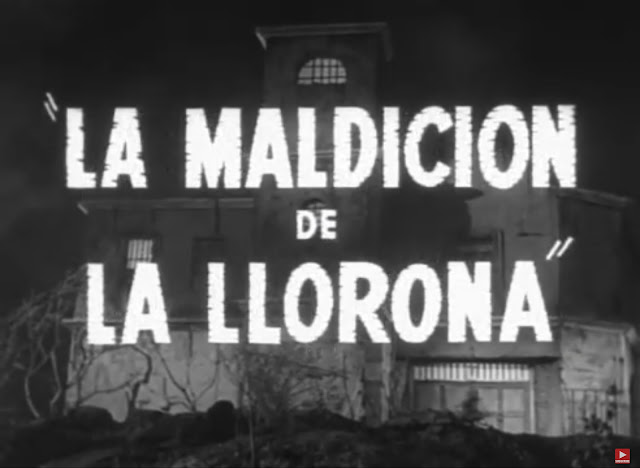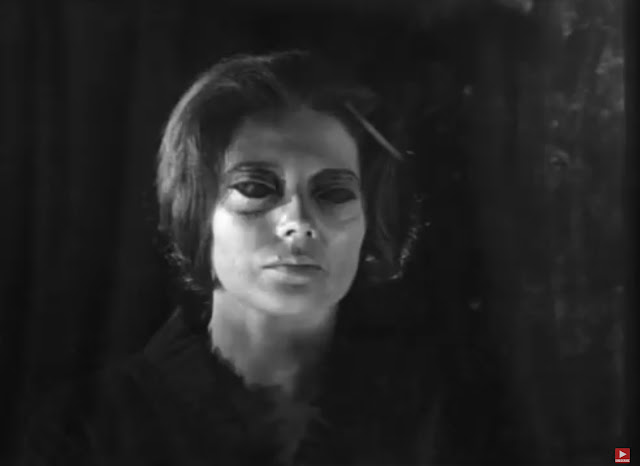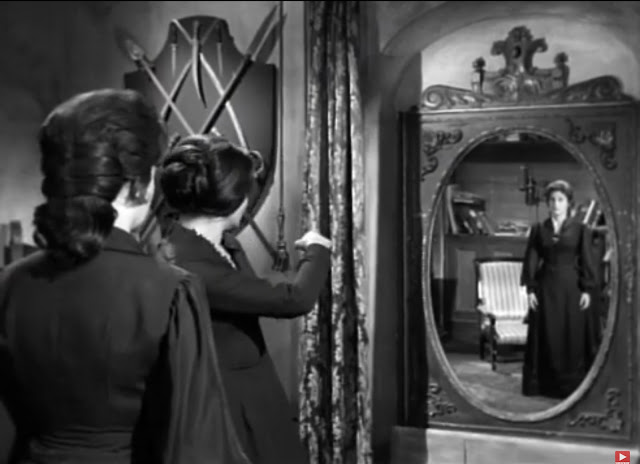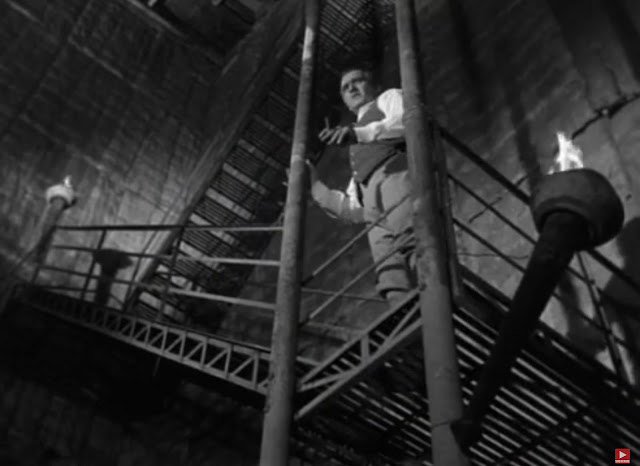Last night on YouTube I watched The Curse of the Crying Woman, aka La Maldicion de La Llorona, a Mexican horror film from 1961. It was dubbed in English, which made it even more amusing. The story was about a young woman named Emily who goes to visit her reclusive aunt Thelma whom she hasn’t seen in years. Aunt Thelma lives in an old castle-like house, and it seems that all the townspeople avoid the home like the plague, due to rumors of her being a witch. There have been a series of strange murders in the area, which only fuels the rumors of evil associated with her. It turns out the rumors are true, and Emily is about to find out the truth about her family curse.
Upon arriving to the castle, Emily, who has brought her new husband Herbert, is horrified by the disfigured man whom her aunt has as a servant. Aunt Thelma soon tells her that the legend of the wailing woman, an evil witch from folklore, is true, and that she and Emily are related to her. The Wailing Woman was killed by the townspeople after spreading death and famine, and her decomposing body is kept at the castle, the dagger still buried in her. Aunt Thelma has now inherited her powers; she’s the one responsible for the murders that have been occurring around the area. Since Emily is a descendant, she must fulfill her destiny of pulling the dagger from the corpse at midnight on her birthday, so that the Wailing Woman can return to life and grant Thelma ultimate power, and Emily will eventually take her place.
When Aunt Thelma transforms into the wailing woman, her eyes are all black (obvious make-up patches). Emily finds herself being slowly possessed by the family curse, and must find a way to break it, to save herself from an eternity of evil. The flick plays like an over dramatic Spanish telenovela, made even more outrageous by the cheesy dubbed dialogue. It’s filled with goofy monsters, including one flashback scene that shows a werewolf, and secret corridors filled with spiderwebs and death.
I found myself laughing throughout its runtime at the wild, outrageous plot. They sure came up with an imaginative way to showcase the legend of La Llorona in a film. This is the kind of flick that would have played on some late night horror show. Anyone who’s a fan of low budget, monster b-movies is sure to enjoy this one. I sure did. I’ve watched several old Mexican horror films, and they’re always so fun and over the top. Curse of the Crying Woman is an entertaining slice of silliness.









































Comments
Post a Comment